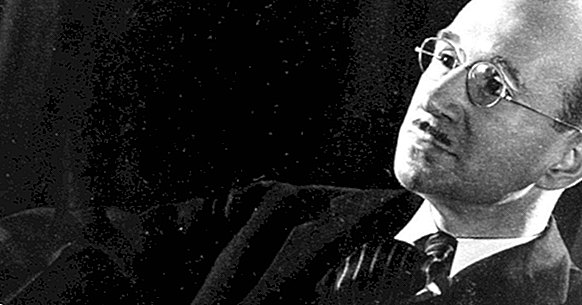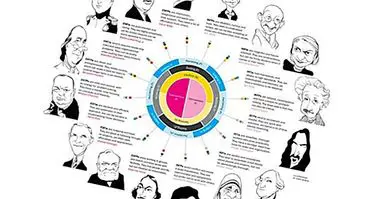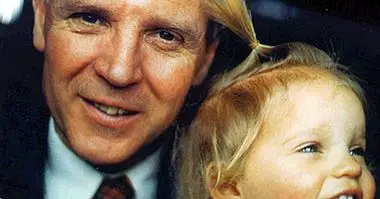The interpersonal theory of Harry Stack Sullivan
The interpersonal theory of Harry Stack Sullivan on the development of personality It is one of the best known in the field of psychoanalysis.
In this article we will describe the main concepts and postulates of this model, whose focus on interpersonal relationships significantly influenced the later developments of psychotherapy.
- Related article: "The main theories of personality"
The interpersonal theory of H. S. Sullivan
Harry Stack Sullivan (1892-1949) published the work in 1953 "The interpersonal theory of psychiatry"; in this he developed his personality model , which is part of the paradigm of psychoanalysis. More specifically, we can classify Sullivan in neofreudism, along with authors such as Carl Jung, Karen Horney, Erik Fromm or Erik Erikson.
Sullivan defended a conception of psychiatry according to which this science should have as object of study the interactions between human beings. In this way highlighted the fundamental relevance of interpersonal relationships (both real and imaginary) in the configuration of personality, and consequently also of psychopathology.
For this author personality can be defined as a pattern of behavior related to situations of interaction with other people. It would be a stable and complex entity, determined as much by innate physiological and interpersonal needs as by learning through early experiences and the process of socialization.
In this sense, the personality would be formed progressively in terms of contact with the social environment and one's capacity to satisfy needs, as well as the tension they cause both from a biological and psychological point of view. The failures in this type of learning and the lack of psychological adaptation would lead to pathology.
The theory of the personality of H. S. Sullivan, and in particular its focus on social interactions, led to the emergence of the school of interpersonal psychoanalysis . This current also differs from the Freudian variant in its interest in individuality and in the importance it gives to the mutual relationship between therapist and patient.
- Perhaps you are interested: "The 9 types of Psychoanalysis (theories and main authors)"
Stable factors that make up the personality
According to Sullivan, the construct we know as "personality" is composed of three stable aspects: dynamism and needs , the System of the Self and the personifications .
All of them are developed from the interaction with other people and how we solve our physiological and social impulses.
1. Needs and dynamism
Interpersonal psychoanalysis defines two large sets of human needs : those of self-satisfaction and those of security. The former are associated with physiology and include feeding, excretion, activity or sleep; The security needs have a more psychological character, such as the avoidance of anxiety and the maintenance of self-esteem.
Dynamisms are complex patterns of behavior and more or less stable that have the function of satisfying a certain basic need - or, in Sullivan's words, of "transforming the physical energy of the organism". There are two types of dynamism: those that relate to specific parts of the body and those associated with experiences of fear and anxiety.
2. The System of the Self
The System of the Self develops throughout childhood as we experience anxiety and relieve it through other people. It is a psychic structure that fulfills the function of manage anxiety, that is, to deal with security needs . With age, it also adopts the function of protecting self-esteem and social image.
- Related article: "What is" the Self "in Psychology?"
3. The personifications
Sullivan uses the term "personification" to refer to the ways in which children interpret the world: attributing to people and collective characteristics of others, based on interaction experiences as well as personal beliefs and fantasies. The personifications will have a great importance in social relationships throughout life .
Modes of experience: the development of the mind
Following the approaches of Sullivan, the personality is formed by the transfer of the interpersonal to the intrapsychic. In this way, if the needs of a person during childhood are satisfactorily covered, he will achieve a sense of self-confidence and security; if not, you will develop a tendency to feel insecure and anxious.
The ways in which we experience our physical and social environment They change according to age, the degree of language proficiency and the correct satisfaction of needs. In this sense Sullivan described three modes of experience: the prototaxica, the paratáxica and the syntactic. Each of them is subordinated to those that appear later.
1. Prototaxic experience
Babies experience life as a succession of unrelated organismic states. There is no conception of causality or a true sense of time. Progressively will become aware of the parts of the body that interact with the outside , in which there are sensations of tension and relief.
2. Paratáxica experience
During childhood, we differentiate ourselves from the environment and obtain knowledge about ways to satisfy our needs; this allows the appearance of personal symbols through which we establish relationships between events and sensations, such as those of causality.
Sullivan spoke of "paratáxica distortion" to make reference to the emergence of experiences of this type in later stages of life. They consist fundamentally of relating to others in an equivalent way to that which occurred with significant persons in the past; this would manifest in the transfer, for example.
3. Syntactic experience
When the development of the personality occurs in a healthy way, the syntactic thought appears, which has a sequential and logical character and is constantly modified according to the new experiences. further the symbols are validated through consensus with other people, which gives a social meaning to the behavior.



















